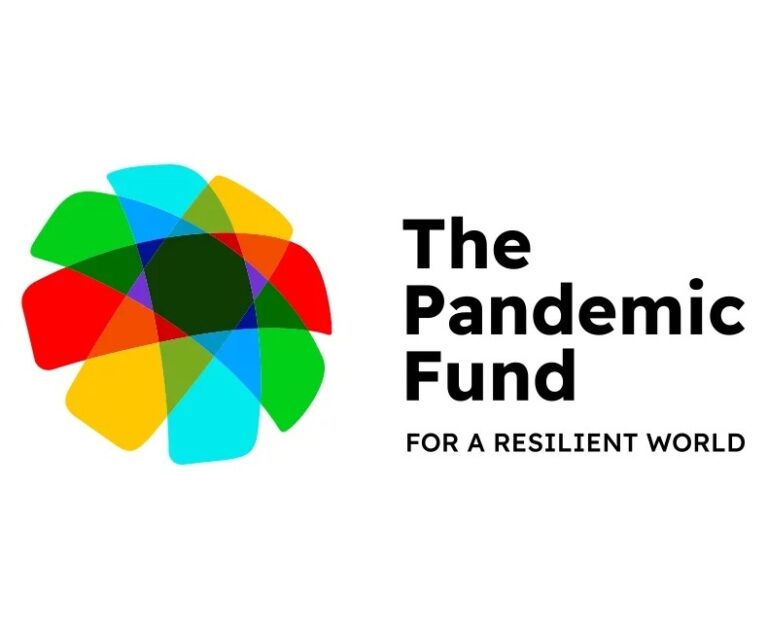The Pandemic Fund
- Founded
- Officially launched on November 13th, 2022 (replacing an earlier proposal called the Global Health Threats Fund).
- Governance
- Governing Board with 21 voting seats: 9 for ‘contributors’ (donor countries), 9 for ‘co-investors’ (countries that could receive funding), 1 for philanthropic foundations, and 2 for civil society organisations. The World Bank serves as the Trustee. The Secretariat of the fund is housed at the World Bank. The fund has a Technical Advisory Panel, chaired by the World Health Organization (WHO).
- Funding
- Funding for The Pandemic Fund is based on voluntary contributions from sovereign donor countries and other contributors, such as philanthropic foundations. The target that The Pandemic Fund set is to mobilise USD 10.5 billion per year. Pledges for the fund started half a year ago and to date, around USD 1.4 billion has been pledged.
- Description
The idea of a new global health fund focused on pandemic prevention, preparedness and response, was introduced in 2021 by the G20 with an initiative called the Global Health Threats Fund. This has evolved into a fund with a different set-up, proposed by the G20 in early 2022 and further elaborated by the World Bank. This initiative, called The Pandemic Fund, is hosted by the World Bank and is financed through voluntary contributions (instead of contributions based on countries’ GDP, as in the proposal for the Global Health Threats Fund).
Only Implementing Entities – being organisations tasked with operationalising the fund (e.g. the World Bank, regional development banks, The Global Fund to Fight AIDS, Tuberculosis and Malaria, and CEPI) – may submit funding proposals, developed together with eligible countries. It finances critical investments to strengthen pandemic prevention, preparedness and response capacities at national, regional and global levels, with a focus on low- and middle-income countries.
At country level, The Pandemic Fund intends to strengthen disease surveillance, laboratory systems, emergency communication, pandemic coordination and management, critical health workforce capacities, and community engagement. At regional and global level, the fund will support, among other things, reporting and information sharing, regulatory harmonisation, and coordinated development, procurement, distribution and deployment of medical countermeasures and supplies.

Strengths
- Makes a clear case for a sharp increase in funding for pandemic preparedness and response.
- The proposal emphasizes the need for funding for pandemic preparedness and response to be additional and not detract from, for example, investments needed to strengthen health systems.
- Governing Board includes representatives from donor and recipient countries in equal number.
Weaknesses
- Further fragmentation of the global health governance, with yet another vertical fund being established alongside the already numerous global health funds, UN organisations and international financial institutions.
- The funding, which is based on voluntary contributions, is not by far sufficient for what is needed.
- While the proposal emphasizes the need for additionality, there is no guarantee that this will be the case. There is the concrete risk that increased public funding for pandemic preparedness and response will detract from other important public funding.
- The Pandemic Fund – like other global health funds – will mobilise earmarked resources and depends on charitable donations. This is likely to cause problems with alignment to country systems and plans, and they are inherently volatile, depending on the goodwill of donors.
- While private companies will be eligible to receive funding from The Pandemic Fund, it is not clear what will be the size and scope of private sector financing and how this will be governed.
- While the original proposal of the G20 contained strong text on the need for contractual clauses to ensure affordable prices, transparency, sharing intellectual property and technology transfer, there is no mention of how The Pandemic Fund will support local production of medical countermeasures (like vaccines and medicines), and how it will position itself with regards to issues such as intellectual property rights.
Review
The new Pandemic Fund is described as a collaborative partnership among donor countries, co-investors (countries that are eligible to receive funding), foundations and civil society organisations. However, its funding model based on voluntary contributions will inevitably lead to insufficient and volatile funding, with no assurance that these resources will be additional and will not detract from other important public investments. Moreover, the creation of a new global health fund will further fragment the global health financing architecture and its governance.
While the original proposal of the G20 contained strong text on the need for contractual clauses in public-private partnerships to ensure affordable prices, transparency, sharing intellectual property and technology transfer, these are not mentioned anymore as a priority of The Pandemic Fund. It only mentions, among its priorities, to support “capacity for coordinated development, procurement, distribution and deployment of countermeasures and essential medical supplies.”